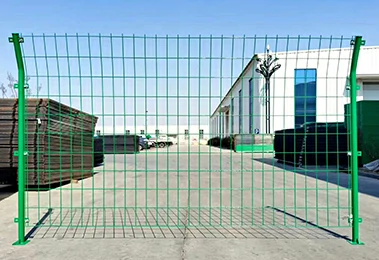 TEL:
+86-13102802206
TEL:
+86-13102802206
 Email:
fencenetting@china.com
Email:
fencenetting@china.com
 Language
Language
 TEL:
+86-13102802206
TEL:
+86-13102802206
 Email:
fencenetting@china.com
Email:
fencenetting@china.com
 Language
Language


Fixing Barbed Wire Fences A Comprehensive Guide
Barbed wire fences have long been a staple in agricultural and industrial settings, providing security and containment for livestock while marking property boundaries. However, over time, these fences can succumb to wear and tear, necessitating repairs to maintain their integrity and effectiveness. This article outlines the process of fixing barbed wire fences, providing a step-by-step guide to ensure that your fence remains functional and secure.
Understanding Barbed Wire Fences
Barbed wire is typically composed of two twisted strands of wire, with barbs placed at regular intervals along its length. These barbs act as a deterrent, making it difficult for animals or intruders to breach the fence. Despite their robust construction, barbed wire fences can face numerous challenges, including rust, broken wires, and loose posts. Regular maintenance and timely repairs are essential to keep the fence in optimal condition.
Tools and Materials Needed
Before starting the repair process, it’s crucial to gather the necessary tools and materials
- Tools - Wire cutters - Pliers - A hammer - A fence stretcher (for tightening wire) - A level - Gloves (to protect your hands) - Materials - Replacement barbed wire (if segments are broken) - Fence posts (if any posts are damaged) - Wire connectors or clamps (to join wire segments) - Tensioning devices (for loose wires)
Step-by-Step Repair Process

1. Assess the Damage Begin by walking along the length of the fence to identify areas that require repair. Look for broken wires, loose barbs, rusted sections, and damaged or leaning posts. Take note of any areas that seem sagging or have lost their tension.
2. Repairing Broken Wire For broken sections of wire, you can either splice the broken ends together or replace the entire segment. To splice - Use wire cutters to create clean ends on both sides of the break. - Overlap the broken ends and use pliers to twist them together tightly. - For better security, consider using a wire connector or clamp. If the damage is extensive, replacing the wire might be more effective. Cut the old wire out, measure the distance needed, and install a new segment.
3. Reinforcing Loose Barbs If barbs have become loose or detached, it’s important to secure them back in place. Using pliers, carefully twist the remaining wire strands around the barbs to ensure they are tight and secure. If barbs are missing, you may have to replace them using new barbed wire.
4. Fixing Damaged Posts Broken or leaning posts can compromise the stability of your fence. If a post is simply loose - Use a hammer to drive it back into the ground or add soil for added support. - If the post is broken, consider replacing it entirely. Remove the damaged post, dig a new hole, and set a new post in concrete or packed dirt to ensure stability.
5. Tensioning the Wire After repairs, it’s vital to ensure that the wire is taut. Use a fence stretcher to pull the wire tight before securing it to the posts. Proper tension prevents sagging and maintains the integrity of the fence.
6. Final Inspection After making all repairs, conduct a thorough inspection of the fence. Ensure that all barbed wire is secure, posts are straight, and the entire structure is stable. This is the ideal time to apply anti-rust treatments to prolong the life of the wire.
Conclusion
Fixing barbed wire fences doesn’t have to be a daunting task. With the right tools, materials, and a systematic approach, you can restore your fence to excellent condition. Regular maintenance and prompt repairs will not only extend the lifespan of your barbed wire fence but also ensure that it performs its essential functions effectively. Whether for security, livestock containment, or property demarcation, a well-maintained barbed wire fence is a worthwhile investment that pays off in peace of mind.